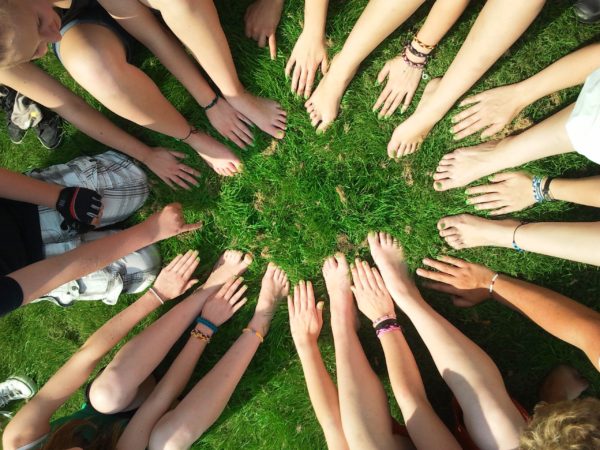Fascinating foot facts, and why our feet matter
There’s a lot of anatomy in the two relatively small packages we call our feet. And it’s not surprising when you consider the very important job that they do in supporting our entire body. In celebration of the New Year and these complex structures, we’ve put together some of our most favourite foot facts – everything you didn’t know about your two amazing feet.
A human foot and ankle is a strong, mechanical structure. Each one contains 19 muscles, and 26 bones. This means that 25% of all your body’s bones are in your feet. Along with that, there are 33 joints. And amongst the 100 ligaments and tendons, is the Achilles tendon – the strongest tendon in the body. It connects muscles in the lower leg with the heel bone and is essential for walking and running. Our feet also contain 250,000 sweat glands which enables them to produce up to half a pint of moisture a day! We have nearly 8,000 nerves in our feet and this could explain why many people find them the most ticklish part of their body. And finally, the skin on the soles of your feet is thicker than it is anywhere else on your body.
Rather than the standard 26, some people have 28 bones in each foot and people born with extra toes, (a condition known as polydactylism) have even more. And whilst we’re talking about toes, Syndactyly – webbed toes- is a condition in which multiple digits are fused together. And about 20-30% of the world’s population have Morton’s Toe, a foot condition in which the second toe is longer than the big toe. If reading this scares you, then you may have podophobia – fear of feet. The word Podophobia originates from Greek ‘Podos’ meaning feet.
Where it all starts
Baby feet are not miniature versions of adult feet; they are shorter and wider in shape and taper toward the heel; the arch is generally not formed and the foot is protected by a layer of baby fat. The shape is due to the fact that the bones of a baby’s feet are not yet fully formed when they are born. In fact, they are mostly still cartilage. As the feet grow, the cartilage starts changing into bone and the foot strengthens and lengthens.
If, as an adult, your whole foot touches the floor when you stand, this is usually described as having “flat feet”. And some people never develop arches, but flat feet can cause pain as they don’t support the body’s weight as well.
Babies’ feet grow quickly, reaching almost half their adult foot size during their first year. You might be surprised to hear that it takes another 15 years or so for a child’s foot to become fully developed.
Fast facts
- Feet are at their largest at the end of the day and the average foot gets two sizes longer when you stand up.
- It’s rare that two feet are exactly the same; one of them is often larger than the other. You should buy shoes for the larger one.
- Feet are spreading to support extra weight as people’s overall weight increases. According to a 2014 study by the College of Podiatry in the UK, the average foot has increased two sizes since the 1970s.
- If you were to take an average of 8,000 to 10,000 steps/day, that adds up to 185,074 kilometers in a lifetime, more than 4x the circumference of the globe.
- Compared to fingernails which grow at an average of 0.1mm each day, toenails grow much slowly; at about 1mm per month. It takes at least five to six months to grow an entirely new toenail. Both fingernails and toenails grow faster during hot weather, pregnancy and teenage years.
- Walking is the best exercise for your feet. It contributes to overall general health by improving circulation and weight control
The toll our feet take
The foot is an evolutionary marvel, capable of handling hundreds of tons of force every day. Each foot takes 1.5 times your body weight while you walk. And when running, your feet take up to five times your weight. And if you’ve ever suffered from painful shin splints it’s probably due to the cumulative and repetitive stresses on the bones, muscles and joints in the legs.
With that in mind you might wonder why standing still is more tiring than walking. This is because you only use a few muscles when you stand, whereas walking distributes the weight and effort over more muscles.
And if you like to wear heels then bear in mind that a 2 ½ inch heel can increase the load on the forefoot by 75%.
It’s not all about us
Butterflies taste with their feet, gannets incubate eggs under their webbed feet and elephants use their feet to hear, picking up vibrations from the earth through the soles of their feet. And you thought that our feet were special!
And finally…
We love feet; and hope this has given you a new found respect and appreciation for these amazing parts of our body. Feet are good indicators of your general health. Abnormalities or pain in the feet can often signal more serious health conditions. So take care of them well and seek advice whenever you are not sure.




